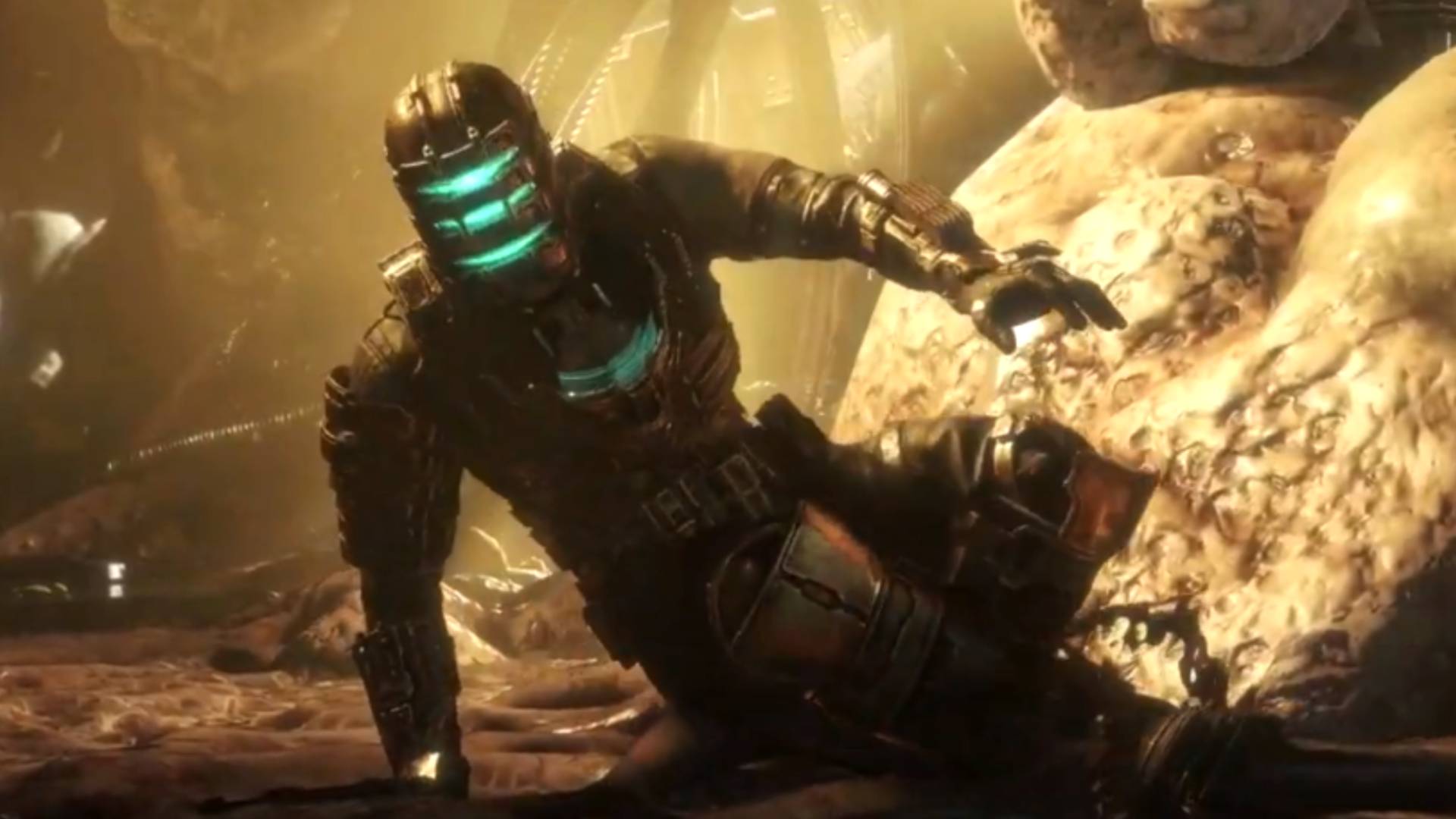Buy the Dead Space remake if you want to see what the PS5 controller can do
That’s gonna hurt

I’ve been playing the Dead Space remake on PS5, and found that it uses the console’s controller in ways I’ve not seen from any other release on the platform. If you want to see why the DualSense is special, then you should play EA Motive’s sci-fi horror game.
Ahead of release, EA Motive wasn’t shy about saying the Dead Space remake would utilize DualSense functionality, but nothing could have prepared me for how it would actually feel in my hands. The PS5 controller features haptic feedback and adaptive triggers; the former is a kind of high-fidelity vibration and the latter describes how the gamepad’s triggers can become harder or easier to pull depending on the action you’re performing in-game. They’re both put to exceptional use aboard the claustrophobic corridors of Dead Space’s USG Ishimura here.
The adaptive triggers stand out when you get to grips with hero Isaac Clarke’s weaponry. The pulse rifle, a rapid-fire, triple-barrelled gun that wouldn’t look out of place in the hands of one of the space marines in Aliens, has incredibly aggressive recoil. As I fire the weapon, the adaptive triggers violently kick against my fingers, selling its unwieldy power.
The kick of the triggers does more than convey the power of the gun, it also tells you the weakness of the wielder
The kick of the triggers does more than convey the power of the gun, it also tells you the weakness of the wielder. Clarke isn’t a soldier, he’s an engineer caught up in a fight against monsters that could tear him limb from limb. It makes sense that he wouldn’t be able to control the military weapon. You feel each round leaving the chamber thanks to the haptic feedback’s localized vibrations. It means when your rounds do hit monstrous flesh, you can believe the damage they wreak on your enemies.
Where Clarke excels in combat is with the Plasma Cutter, the series’ defining weapon of choice. Designed to cut through metal, you turn this engineering tool into a laser scalpel, carving your enemies’ limbs from their bodies. It’s far more manageable to control than the pulse rifle, letting you be surgical in taking down the reanimated corpses that populate the USG Ishimura. You feel the plasma energy surging in the triggers when you’re aiming, buzzing under your fingers, and when you fire, you also feel the bolt release and re-chambering come through the PS5 controller. It makes landing a perfectly timed line of plasma particularly satisfying.
Environmental Hazard

The Dead Space remake’s subtle implementation of haptic feedback is continually impressive. You feel the pressure changes as airlock doors open, as well as when Isaac’s boots magnetize to the floor before taking off with the thrusters. It may sound like a small inclusion, but the attention to detail makes the zero gravity moments engrossing.
I’ve also been appreciating the little touches, such as when your oxygen supply is low. Not only will Clarke take deep breaths as a visual indicator, but you can feel his heartbeats through the gamepad, adding to the sense of urgency. If you don’t get to safety, the sound of a flatlining heart monitor plays through the built-in speaker on the DualSense. Chances are you’ll be hearing it quite a bit as Dead Space is far from forgiving – even though some of the original game’s more challenging sections have been redesigned.
Sign up for breaking news, reviews, opinion, top tech deals, and more.
Many of the best PS5 games make strong use of the DualSense’s functionality, but none so well as the Dead Space remake. The last time I was this impressed by the DualSense was playing Astro’s Playroom in the early days of the console. EA Motive has shown what’s possible with the Sony hardware, using vibrations and trigger pulls to steep me in the horror-filled corridors of the USG Ishimura.

Formerly TechRadar Gaming's Hardware Editor, Aleksha McLoughlin is now a freelance writer and editor specializing in computing tech, video games, and E-commerce. As well as her many contributions to this site, you'll also find her work available on sister sites such as PC Gamer, GamesRadar, and Android Central. Additionally, more of her bylines can be found on Trusted Reviews, Dexerto, Expert Reviews, Techopedia, PC Guide, VideoGamer, and more.